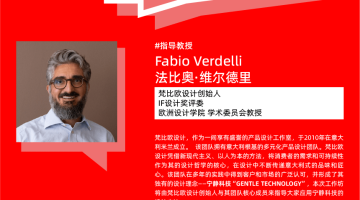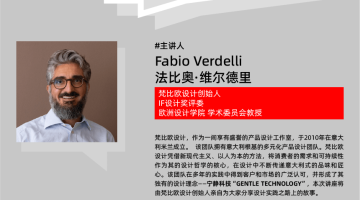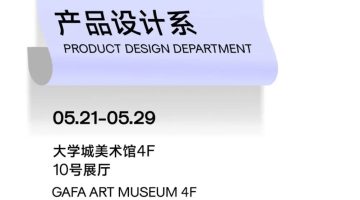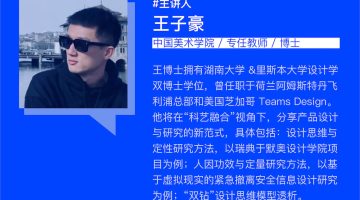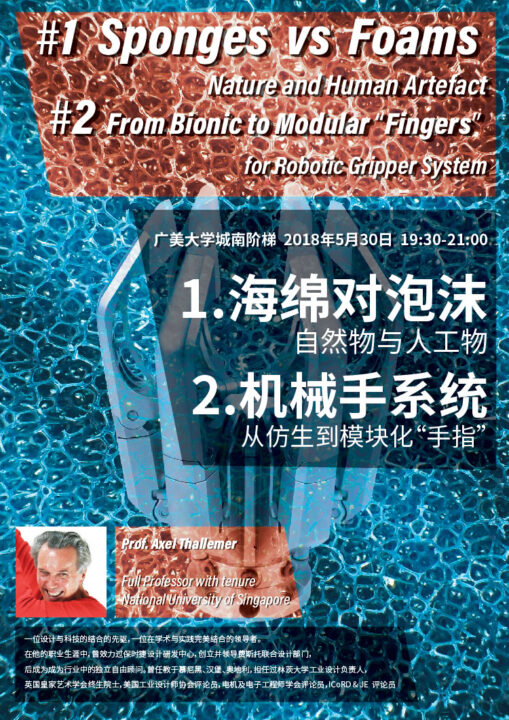
Speaker:Axel Thallemer
Time:30th May (Wed.) 19:30—21:00
Address:South lecture theatre. GAFA high education mega center campus.
Prof. Dipl.-Ing.(Univ.) Axel Thallemer is Full Professor with tenure at National University of Singapore. In his fifteen years of employment by industry he designed at research and development center of Porsche, followed by founding and being Head of Festo Corporate Design, afterwards freelance consulting in industrial context. Previous professorships were in Munich, Hamburg and Austria (Dean and Chair of Industrial Design at Linz university, scientifically repositioning under the brand “scionic®”), currently there are some 19 additional visiting professorships and circa 35 patents. Life Fellow of The RSA in London, founded 1754 and i/IDSA, ICED/IEEE as well as ICoRD & JED reviewer.
Title1: “Sponges versus Foams | Nature and Human Artefact”
Natural sponges have been used as tools by humans and even animals since long times. Design has evolved as purpose-driven form giving from hand axe to computer mouse and beyond by bettering tools for progress of mankind. Industrial design – opposite to styling – can be based on research through natural sciences. Looking at paragons in nature, here marine soft sponges, can lead by heuristic in analogy to new microstructures and by the help of additive-generative fabrication to hard or soft “metamaterials”. Innovation today most likely starts from specifically designing “new” [instead of existing] materials made to fit to their prospective application while taking their respective manufacturing technologies, ecological and economical context into account. This can yield lightweight structures for conserving resource and energy in aerospace and mobility applications or scaffolds for biomedical purposes. Representational heuristics exemplify the ideation of new lattice structures from natural sponges from the Caribbean, Mediterranean, Philippines to artificial soft and hard foams. Semi-finished products are juxtaposed to functional components with differentiated internal structures. The latter are showing a microstructural architecture through interdependence of structure and processing as well as resulting properties and performance. A visual exploration in purposefully designed materials versus solid matter.
Title2: From Bionic to Modular “Fingers” for Robotic Gripper System’
Compared to taking inspiration from paragons found in nature, purpose-driven reasoning is used to open up a larger range of strategic solutions than would generally be available in the context of biomimetics, due to the evolutionary burden and organic constraints. With respect to a suitable functional shape, the specific design around a pneumatic micro actuator leads to this “tool” as human artefact. Working from the self-defined technical package, an appropriate shape is embodied on a multifunctional and rational basis where saving of resources and the use of least expensive material and fabrication technologies were in the centre of thinking that gripper system.
Video: ‘Modular Gripper as dynamic exhibit for industrial trade fairs’
https://www.youtube.com/watch?v=u4ZScJsaepg
Abstract:
For both innovation and strategic design management education is shown via a case study how to teach through research in a multidisciplinary manner. Blurring boundaries of professional compartmentalisation and fragmentation of knowledge is leading towards a new era of innovation by not mimicking nature.
Visualisations clearly depict the design process, the managing of both the conceptual development and the purpose-driven tool resulting in the final prototype in comparison to the common industrial solution.
In the presented project this method is being illustrated via a pneumatic modular gripper. Contrary to the previously shown bio-mimetically induced end effectors, this one is designed with no reference to natural paragons and prototyped by traditional, “classic” subtractive fabrication technologies only.
This end effector system is supplementing the previously designed biomimetic grippers and robotic arm.
Subsequently there are two to six freely interchangeable “fingers” which can be added or detached as needed for the envisaged task without tool by sliding in or out of the guide groove. Each gripping motion can be pneumatically changed to be radially or parallel acting by computer control. There are currently three different types of fingers from variable adaptive form-locking fit to pincers gripping. The T-groove is allowing for any future finger type to be developed and used depending on the application scenario.
Industrial Design of pneumatically driven Modular Gripper has been researched, developed, fabricated and demonstrated by master student* of scionic® I.D.E.A.L. curricula in Austria. The presentation spans from natural sciences in industrial design to purpose-driven Gestalt.
*This is the Modular Gripper design of Master thesis by Dipl.-Ing. (Univ.) Dominik Diensthuber, while the presentation is additionally supported by Aleksandar Kostadinov, who is currently Ph.D. student at NUS SDE DID tutored by above mentioned author/presenter.
In contrast to purely aesthetic design with its emphasis on subjective values, the focus of the innovation origination process here is on the rationalised formulation of functional shape in harmony with common materials, production and environmental technologies. This is the opposite of prettifying or pure styling.
It is also for this reason that there will be no dressing up of a predetermined technical package for the purpose of providing marketing or advertising with better sales or promotion arguments or staging mere brand values, but instead – and from the start – a concentration on the shaping of an modular gripper tool.
Procedures: Instead of taking inspiration from paragons found in nature, purpose-driven reasoning is used to open up a larger range of strategic solutions than would generally be available in the context of biomimetics, due to their evolutionary burden and organic constraints. With respect to a suitable functional shape, the specific design around a pneumatic micro actuator, leads to this functional human artefact. Working from the self-defined technical package, an appropriate shape is being embodied on a multifunctional and rational basis where saving of resources and the use of least expensive material and fabrication technologies were in the centre of thinking that modular gripper system.
Acknowledgement
The authors would like to thank Dr. Wilfried Stoll, shareholder of Festo, for the financial support of the development of this gripper system which originally was designed to serve as dynamic exhibit at international trade fairs. Showing various applications, it has been presented in the years 2014, 2015, 2016, and 2017 amongst others at the Hannover Messe, the Motek fair in Stuttgart and the Automatica fair in Munich.
Videos:
‘Modular Gripper as dynamic exhibit for trade fairs’
https://www.youtube.com/watch?v=u4ZScJsaepg
‘Bionic Gripper at IEEE ICRA-X 2017 Singapore’
http://resourcecenter.ieee-ras.org/ras/content/conference-videos/975512
‘AirArm – engineering elegance’
In the course of evaluating the biological grippers by analytical classification, further gripping concepts and especially gripping mechanisms were introduced. The opening mechanism of birds’ beaks proved to be particularly promising. This mechanical principle was first described by Franz Reuleaux in the second half of the 19th century. More than 100 years later, in the 1990s, SCHILLING and ZIMMERMANN re-interpreted the biological paragon which consist of bones, horn, muscles and tendons by translating the three-dimensional kinematic into a two-dimensional Watt’s linkage. About 20 years later it was designed and additively fabricated in Titanium alloy (Ti6Al4V). These grippers are actuated by artificial muscles co-developed by the speaker for Festo.
Video: ‘Dynamic display of the three zoo-kinematic grippers at Hannover Industrial Fair’: https://www.youtube.com/watch?v=rkAlWBLwMVw
For the full abstract, please read below here:
For both innovation and strategic design management education is shown via a case study how to teach through research in a multidisciplinary manner. Blurring boundaries of professional compartmentalisation and fragmentation of knowledge is leading towards a new era of innovation by not mimicking nature.
Visualisations clearly depict the design process, the managing of both the conceptual development and the alternative morphologies resulting in the final prototype in comparison to the common industrial solution.
In the presented project this method is being illustrated via pneumatic gripper systems. Three bio-mimetically induced end effectors are designed and prototyped by additive-generative fabrication.
These terminal effectors are supplementing the previously designed robotic arm:
Subsequently, by additive fabrication methods, it is shown, that these three designed grippers may not be manufactured by traditional production methods. This is particularly true for selective laser melting of metals when used for objects that require high mechanical strength while maintaining minimal cross-sectional areas.
Zoo-kinematic Industrial Design of three robotic end effectors has been researched, developed, fabricated and demonstrated by Master students* of scionic® I.D.E.A.L. curricula in Austria. The presentation spans from natural sciences in industrial design management, materials- and production technologies to purpose-driven Gestalt.
*Three of these students, Dominik Diensthuber, Aleksandar Kostadinov, Bernhard Rogler are Ph.D. students at NUS SDE DID tutored by above mentioned author/presenter.
In contrast to purely aesthetic design with its emphasis on subjective values, the focus of the innovation origination process here is on the rationalised formulation of functional shape in harmony with materials, production and environmental technologies. This is the opposite of prettifying or pure styling.
It is also for this reason that there will be no dressing up of a predetermined technical package for the purpose of providing marketing or advertising with better sales or promotion arguments or staging mere brand values, but instead – and from the start – a concentration on the devising of analytic solution variants.
Procedures: Taking inspiration from paragons found in Nature, inductive reasoning will be used to open up a larger range of strategic solutions than would generally be available in the context of traditional engineering sciences, due to their compartmentalisation of specialised knowledge. With respect to suitable functional shapes, the wider range of deduced scenarios that thus arises, leads into the so-called morphology box. Working from the basis of the respective scientific aims, a combination of appropriate properties will be addressed on a multifunctional and interdisciplinary basis.
Acknowledgement
The authors would like to thank Dr. Wilfried Stoll, shareholder of Festo, for the financial support of the development of these grippers which originally were designed as dynamic exhibits at international trade fairs. Showing various applications, they have been presented in the years 2012, 2013, 2014, 2015 and 2016, amongst others at the Hannover Messe, the Motek fair in Stuttgart and the Automatica fair in Munich.
I would like to thank the former director of “Die Neue Sammlung”, Professor Dr. Florian Hufnagl, “The International Design Museum” at ‘Pinakothek der Moderne’ in Munich for his visionary decision to accommodate both the grippers as well as AirArm in the collection. According to his manifest, Dr. Hufnagl “does not want to conduct industrial archaeology”. He is rather “interested in collecting innovations prior to them becoming mainstream”. We would also like to thank his successor, director Dr. Angelika Nollert to take our two articulated ‘AirArm’ (“engineering elegance” https://vimeo.com/159170235) robotic arms as well as the before described three bionic grippers from custody to unveil and publicly display them in permanent exhibition by rededicating the previous exhibition space ‘Computer Culture’. Two ‘Airarm – engineering elegance’ robots and three ‘bionic grippers’ are exhibited on permanent display at “The International Design Collection – Pinakothek der Moderne”, Munich, Bavaria, Germany, here the Museum’s video clip:
https://www.youtube.com/watch?v=WFYRhJSmzk0
Video:
Dynamic display of the three zoo-kinematic grippers at Hannover Industrial Fair
https://www.youtube.com/watch?v=rkAlWBLwMVw
